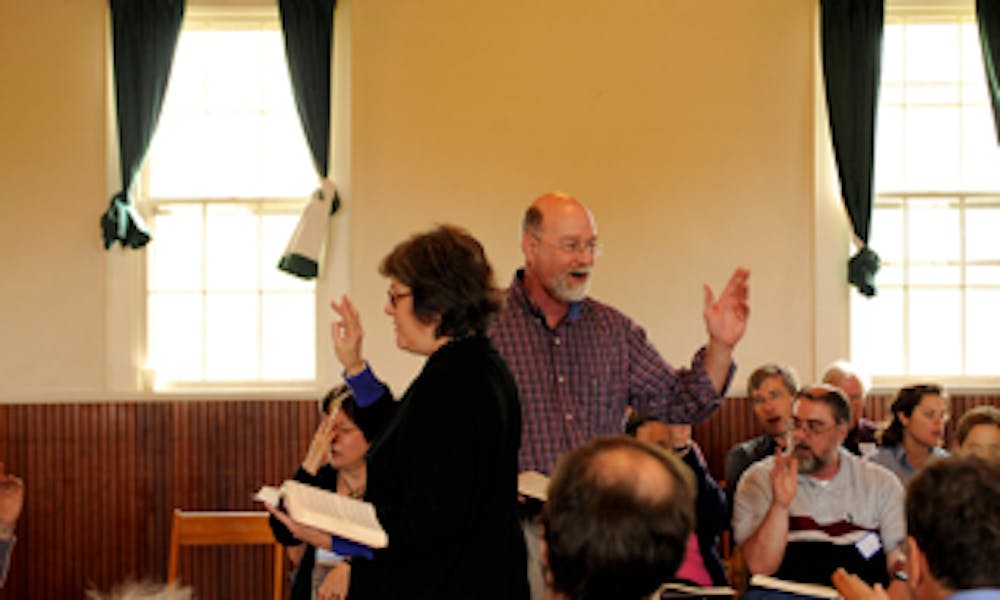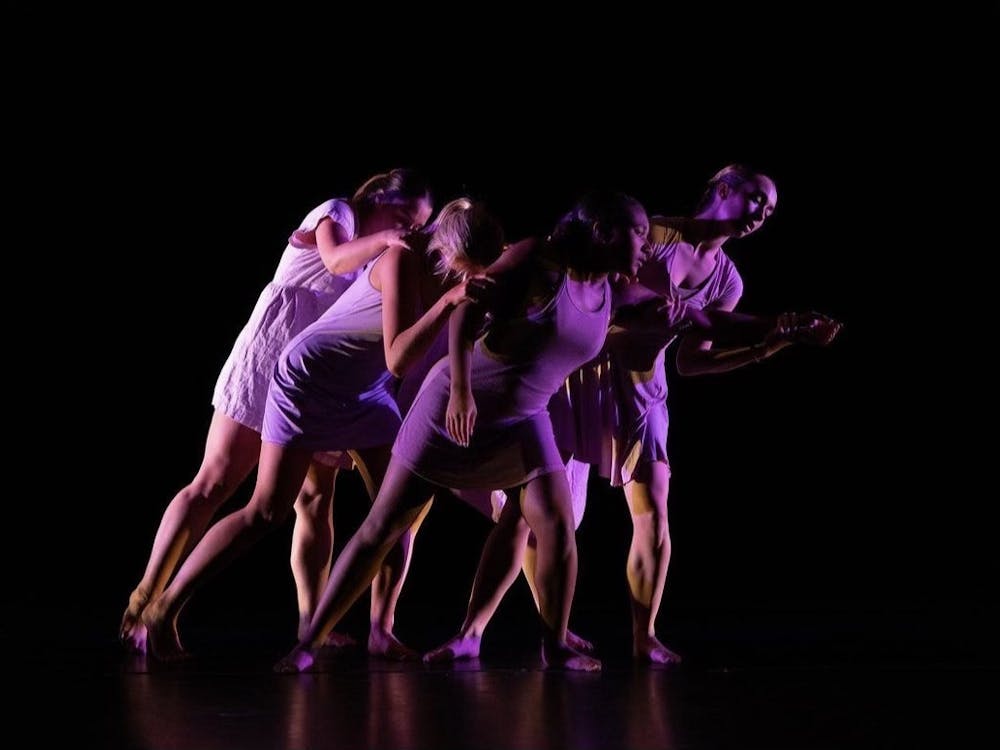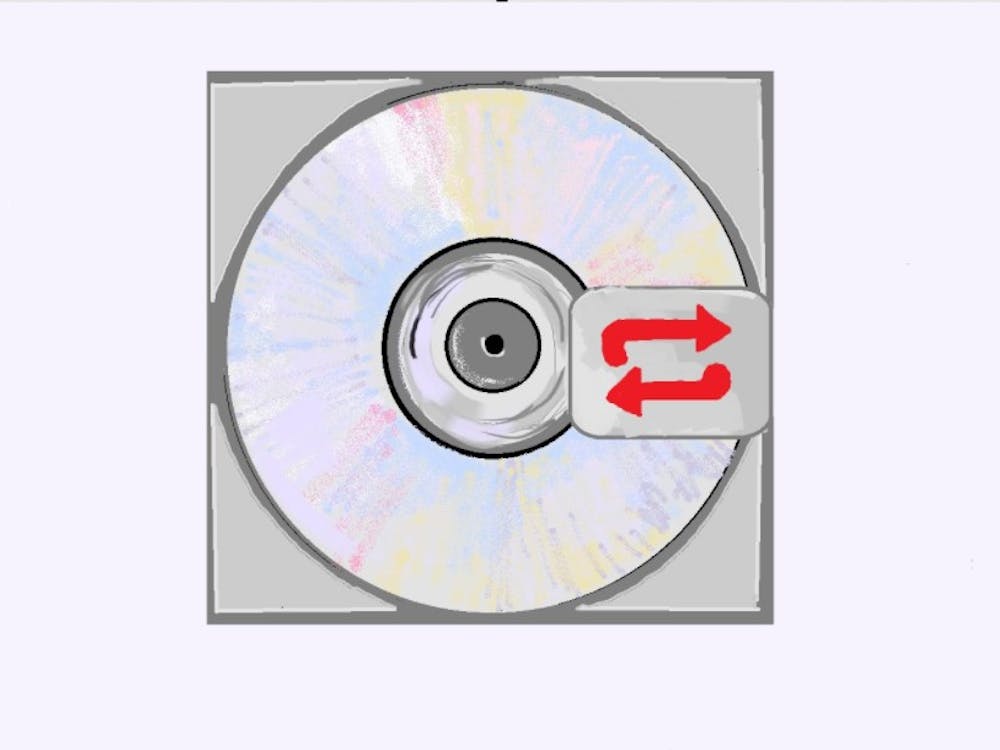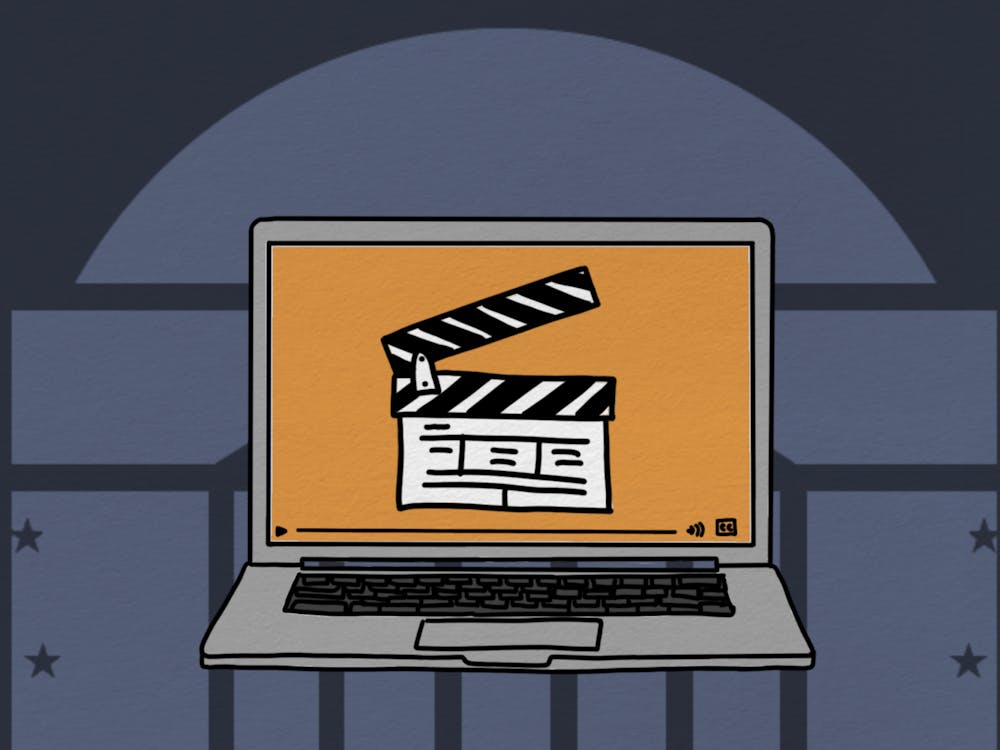Entering a practice session of the Charlottesville Sacred Harp ensemble feels a little like time travel. Though the ensemble gathers in the open, naturally lit space of the Charlottesville Friends’ Meeting House, the shared musical experience feels better suited to coarsened, 18th-century settlers singing around a fire. For the chorus’s most recent gathering, nine people of all ages and vocal parts came together to sing. The group compensated for their numbers by collectively singing at the top of their lungs.
“The joke is, if you can hear your neighbor, you’re not doing your job!” participant John Alexander said.
When everyone heeded this advice, the competition between the distinct melodic lines of the four parts created an unexpectedly immersive synthesis. This effect was not unique to the time or place, but the visceral reaction which Sacred Harp music evokes is consciously rooted in its composition.
The songbooks from which the group sings are written with a shape-note scheme developed by 18th-century composer William Billings. These shape notes premise a pre-tonal system centered more on tetrachords than on the full tonal scale. This system, though accessible to musicians with prior training, allows totally inexperienced singers to join in singing often complex harmonies.
“[Shape notes] take getting used to, and then it’s easy,” Frances Schutz, a member with little outside musical experience, said.
Though their songbooks include material from the 18th to the 21st century, the songs draw their compositional inspiration from shape-note music’s countercultural roots. The songs abound in parallel fourths, fifths and octaves — intervals considered dissonant by the rules of counterpoint, which prevailed in the 18th century. Canonic elements and discordant suspensions add to the gritty, unvarnished sound of the shape-note song.
Often, the message of the music furthers the cultural divide between the Sacred Harp tradition and the modern age — the singers described much of their music as “dire” or “discordant.” The lyrics are often drawn from 18th-century hymn-writers such as Isaac Watts. Calvinist themes of God’s imminent wrath and the constant risk of being smitten seem uniquely pertinent after singing with a Sacred Harp group. Still, the members of Charlottesville’s group don’t uniformly share the religious views found in the words of their songs. Rather, members said they feel the experience of singing has greater meaning than the words they sing.
“I always felt it was a very spiritual thing but never in a theological sense,” Alexander said. “The feeling of it, the rawness and the beat always felt very spiritual.”
Other group members agreed.
“My parents are atheist,” member Bev Yaeger said. “I grew up an atheist, but I find that this shape-note singing is very spiritual to me because you can only do it together. Breathing together, doing something you can’t do as individuals is very spiritual to me.”
The group seemed confident the next generation would inherit this unique shape note experience.
“Urban, hip, northeast young people are flocking to this,” Alexander said. “[They] have picked this up and mastered it really quickly.”
Though shape-note music draws inspiration from its roots, it is nevertheless an evolving tradition. At all-day sings like Charlottesville’s, composers bring brand new shape-note hymns to be sung. The community is receptive to new hymns and, if they are fancied enough, these songs might even be integrated into the next Sacred Harp songbook.
This is how the shape note tradition has developed and will develop, Alexander explained.
“There are now probably ten or twelve books currently being sung from, and there are hundreds that have come and gone,” he said.
Whether the experience of singing with a shape-note chorus is religious or spiritual, it is certainly a powerful one. In shape-note singing, music is neither exclusively consumed nor produced, but participants are engaged in a manner replicated in few other traditions available to the millennial generation. Though the experience evokes the past, it also promotes a sense of present action and community often discouraged by popular methods of media consumption. This folk tradition has outlived its religious roots and fulfills a unique role in the American culture as a bond between generations.
Correction: An earlier version of this article stated John Alexander was the group's leader. Alexander is a member of the ensemble.





